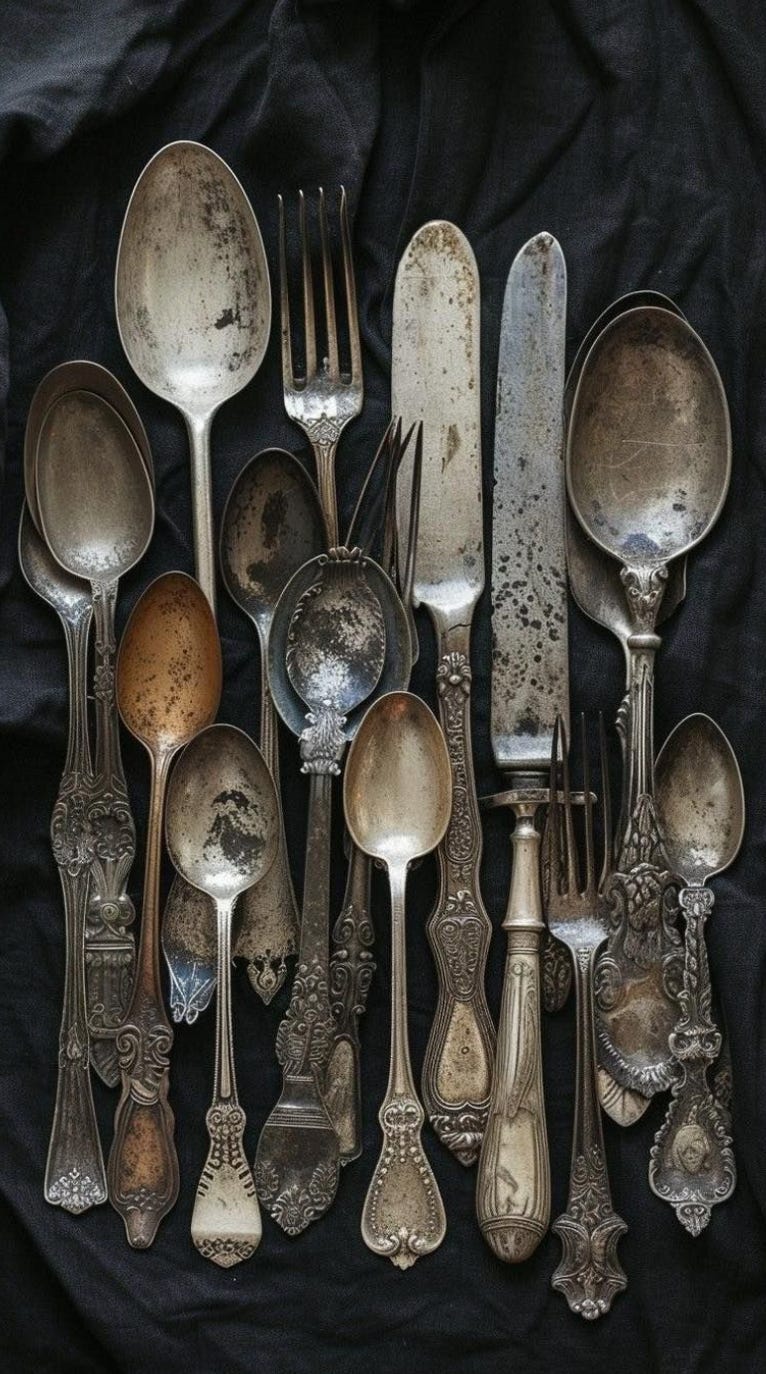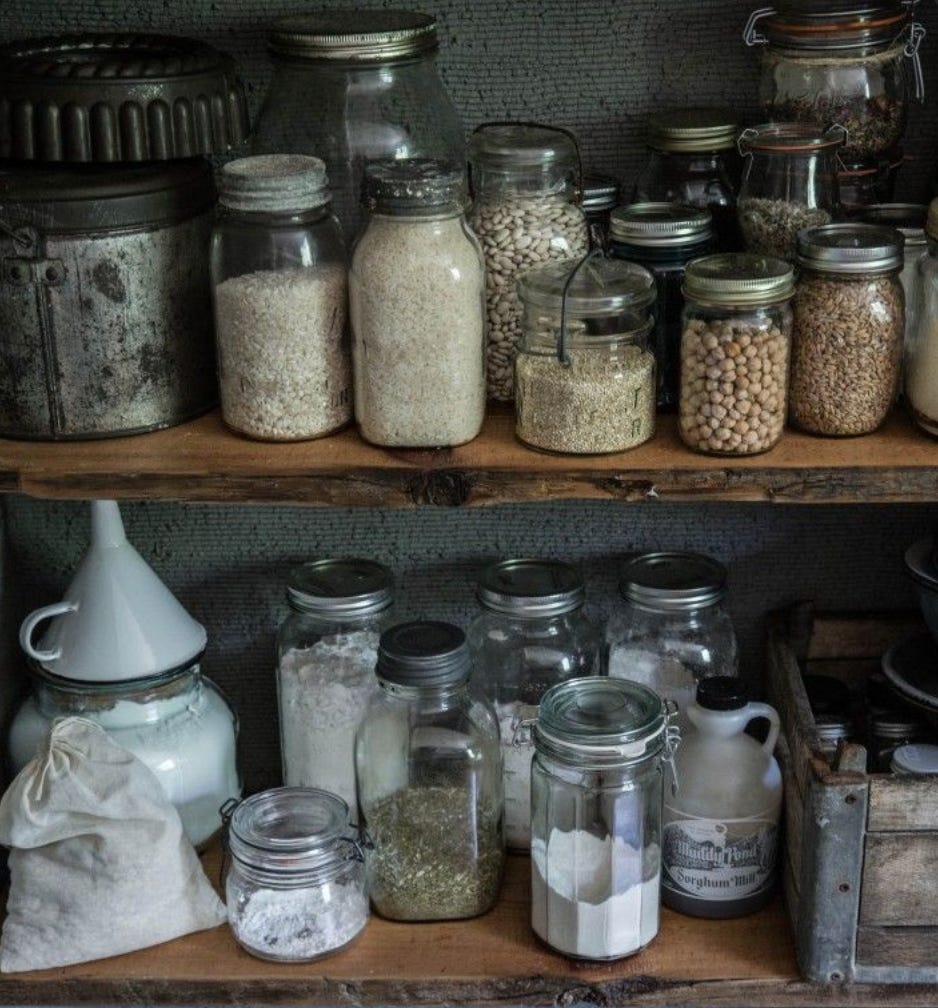My Holistic Kitchen Essentials
A comprehensive list of my current non-toxic kitchen non-negotiables .
Hi, everyone! I received a request from a very sweet subscriber to detail the equipment I reach for the most in my kitchen. As someone who loves lists, I have taken this opportunity to create an unnecessarily long one.
While this is not absolutely everything I use in my kitchen, these are the most utilized items in my kitchen I feel every home cook/baker should have at their disposal. In a world where pollutant exposure is a given, I try to minimize harmful chemicals in my home, especially in my food! The food you are eating is just as important as how it is prepared.
I’ve included a short explanation for each item’s inclusion (when necessary) as well as linked my recommended brands. Please let me know if you have any questions or comments, as always, I’d love to hear from you! <3
-Cèilidh
Plug-In Equipment:
This is, by far, my most-used piece of kitchen equipment! If you are someone who bakes even semi-regularly, I would highly suggest investing in a quality stand mixer (I recommend Kitchen Aid) with a fitted stainless steel bowl, whisk, paddle, and dough hook attachments.
Apart from a stand mixer, my next most-used piece of plug-in equipment is my hand mixer. I have had my Kitchen Aid hand mixer since I was 15, and it has served me extremely well. Hand mixers are more apt at whipping smaller volumes when the power of a stand mixer is unnecessary.
Having a reliable blender is a necessity for me. From turmeric ginger shots, blended soups, fruit and vegetable purèes, sauces, smoothies, etc, I get a lot of use out of my blender. I’ve recently upgraded my 10-year-old Ninja blender to a Vitamix. While the Vitamix price tag is a bit excessive, the quality difference is noticeable. If you don’t do much blending, a Vitamix may be overkill. Shop to your needs!
While comparable to a blender, food processors are better suited for coarse sauces (think pestos), chopping, and slicing different vegetables. The proper processing of vegetables can heavily impact the final product, so having the equipment necessary can truly make all the difference!
Pots & Pans:
Stainless Steel Pot and Pan Set
The coating on nonstick pans (polytetrafluoroethylene or “Teflon”) belongs to a group of fluorinated polymers called PFAS, one of which, perfluorooctanoic acid, is directly linked to immune and reproductive harm as well as multiple cancers. Perfluorooctanoic acid contains a shorter chain molecular makeup than Teflon, but we know that heat collapses Teflon’s structure, condensing it and changing its potential health ramifications. The same goes for scratched Teflon, as a break in the coating exposes food to significantly more chemicals than when intact. There are not a great deal of studies or regulations on the safety of Teflon, but perfluorooctanoic acid was banned from American nonstick products in 2013. Additionally, there are stricter product regulations on PFAS in the European Union than in America. Personally, I like to cut down potential harmful chemical exposure when possible, so I invest in stainless steel and cast iron cookware as these potential health hazards are a non-issue!
This is not an expansive set of pots and pans, but it is a great starting place to build a collection!
For the same reasons listed above, I cook with cast iron when applicable! Cast iron is especially apt for pan-frying cuts of meat or when a dish requires both stovetop and oven cooking (a cast iron skillet can go between the two safely).
Dutch ovens are the perfect multi-use, heavy-duty pot. These pots are perfect for braising, roasting, or any kind of preparation that requires extended cooking times. I prefer Le Creuset to Staub Dutch ovens, but it really is personal preference. Also, in terms of personal preference, I favor the oval Dutch oven to the classic round.
Baking Pans:
I feel that this is a bit self-explanatory (as most things on this list are!) but having some sturdy baking sheets of multiple sizes are necessary in almost every kitchen.
From loaf cakes to banana breads, loaf pans are a classic baked good tin that every kitchen could use. I’ve linked a very standard rectangular iteration but there are so many fun shapes and designs you could pick! Here are some beautiful offerings from Nordic Ware.
You had to know this would be on here given my reputation! All of my cake tins are Nordic Ware in varying sizes (4-inch, 6-inch, 8-inch, 9-inch, and 9-inch springform). I have found these pans to be extremely reliable and I recommend them to you with the highest praise.
Utensils
The usual “black plastic” kitchen utensils are loaded with chemicals, including flame retardants, carbon black, and heavy metals that, when exposed to heat (as cooking usually includes) can leech into food. I try to avoid plastic in the kitchen altogether and opt for wooden or stainless steel cooking utensils.
As stated above, I avoid cooking with plastic utensils, but this swap does not have to be costly!
I didn’t include a knife set in this list as I felt that would be a bit elementary. If you cook regularly, you have knives. But, what a lot of home cooks do not have, are proper knife sharpening tools (you should be sharpening your knives every time you cook, it’s extremely important for safety). Here are the two options I use. Both are very easy to operate, but I find the steel to be a bit more technical and tricker to get the hang of. With that said, the wet stone takes a bit more time to set and clean up but I do prefer it significantly to the steel. To each their own!
I prefer balloon to coil whisks, but a few of either (or both) in varying sizes are definitely necessary!
A microplane is my favorite tool for prepping garlic, ginger, or citrus zest. As someone who uses all three of these things on a near-daily basis, my microplane gets significant mileage.
This is one of my favorite tools I never see mentioned! I use my bench scraper for pie doughs, pastas, cleaning, and scooping up vegetables when prepping. This tool is extremely versatile and I highly recommend obtaining one if possible.
Food Prep:
In the same vein as my blurbs on plastic utensils and nonstick pans, I prefer to avoid plastic cutting boards as well! Wooden cutting boards are durable, reliable, and contain natural antimicrobial properties that keep your knives and kitchen clean. There is a bit of upkeep with wooden cutting boards as opposed to plastic (specific cleaning, oiling the wood), but I find this to be a small price for a healthier kitchen.
In case you are unaware, dry ingredients like flour, rice, and beans cannot be accurately measured in the glass jugs we think of when asked to conjure up a mental image of a measuring cup. Dry ingredients need their own measuring cups!
A few mixed-size glass liquid measuring cups are a staple in every kitchen. I’m sure you already have these but it felt wrong to include dry measuring cups and leave out liquid.
Good quality mixing bowls (and a lot of them!) are another self-evident addition to this list.
I use my digital scale every time I bake, and that is not an exaggeration. Baking, more so than cooking, requires a certain level of measurement precision, which can only be obtained through weighing out ingredients. Someone’s “1 cup of flour” or “2/3 cup of sugar” could be more packed or less leveled than another’s, and two people following the same recipe could end with completely different results. Weighing out ingredients alleviates this problem, as 120g of flour to someone is the same as 120g to another.
Food Storage:
Mason jars are an extremely convenient, cheap, airtight, and low-toxin option for storing any type of food, both cooked and raw, refrigerated or unrefrigerated.
Having some glass Tupperware-style containers takes care of the rest of my food storage!
Cleaning:
This sponge from Blue Land is a great recent addition to my kitchen! It’s made entirely of compostable natural fibers, unlike run-of-the-mill dish sponges that are often made of plastic and contain harmful endocrine-disrupting chemicals like triclosan and melamine. This is such an easy swap that cuts down on toxin exposure!
Of course, everyone has baking soda already in their pantries, but I would wager to say that you are underutilizing it! I keep a big container of baking soda that I use for well, baking, but also removing pesticide residue from produce, cleaning counters, tossing in with laundry, and other domestic cleaning tasks.
Miscellaneous:
With any baked good, proper cooling is a necessity! A wire rack allows the air to circulate around and under the bake, shortening cooling time and ensuring even moisture dispersion.
While most people have a meat thermometer, a candy thermometer is just as helpful for baking! Candy thermometers can withstand higher temperatures, and usually have a longer probe, which makes measuring something like molten sugar much safer. The one I’ve linked here also has a pot clip so you can safely set the thermometer and watch from a distance instead of subjecting your hand to excessive heat.
A very small kitchen quirk I have is my hatred of salt and pepper in shakers or grinders. I have to keep my salt and ground black pepper in bowls, and feel I cannot season properly without being able to grab either with my hands. This gives me fuller control of the amount of salt and pepper I’m dispensing. You can pick any small bowls you’d like! I’ve linked a very affordable neutral option. Just be sure to get ones with lids for hygiene purposes.










